Controversial AquAdvantage approved, could hit the market as soon as 2017
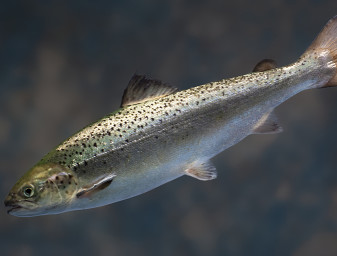
The U.S. Food and Drug Administration (FDA) announced last Thursday that it had finally approved AquaBounty’s new animal drug application for the production, sale and consumption of its fast-growing and genetically modified (GM) AquAdvantage salmon.
It’s a ground-breaking decision on many fronts. The company calls its fish a “game-changer.” Critics say it doesn’t belong on the market. And a handful of retailers, including Costco, Target, Whole Foods and the restaurant company Legal Sea Foods, have already stated that they won’t offer the product in their stores.
“We understand and share the concerns of others, and hope they take the time to carefully consider that AquAdvantage addresses the concerns for food and environmental safety because it can be grown in land-based facilities, cannot reproduce, and can be produced closer to consumers,” the company said in a statement provided to the Advocate. “These attributes make it a compelling alternative from the perspective of environmental impact and sustainability.”
Here are 10 important takeaways about AquAdvantage and the long-anticipated (and somewhat surprising) FDA decision.
- What exactly is it? At market size (8-10 pounds) AquAdvantage looks like a normal Atlantic salmon (Salmo salar). The fish are genetically enhanced with a specific growth-accelerating hormone from the chinook, or king, salmon and controlled by a regulatory sequence (promoter) from the eel-like ocean pout. The only protein produced is the salmon growth hormone. Instead of the standard three years it takes to grow Atlantic salmon to market size using conventional technology, AquAdvantage salmon require about half that time, approximately 18 months.
- It’s been a long and winding road for AquaBounty, which had its first interactions with the FDA regarding the technology back in 1995. CEO Ron Stotish, Ph.D. told the New York Times that he was surprised by the announcement and that the company was not given any prior indication. The Maynard, Mass.-based company has faced numerous delays from regulators amid intense criticism over the course of two decades without selling a single fish to the public in the United States or anywhere else.
- Total investment thus far is roughly $85 million, according to AquaBounty, founded by Elliot Entis. Intrexon Corp. of Blacksburg, Va., purchased 48 percent of the company’s shares in 2012; it now owns 62 percent.
- Despite loud criticism over the product and the federal agency’s methods, AquaBounty passed a rigorous, multi-tiered food-safety and environmental-impact assessment. FDA officials determined in 2010 that the fish is safe to eat, a statement it repeated in its Nov. 19 announcement. Going forward it will be regulated by the Center for Veterinary Medicine under the Food, Drug and Cosmetic Act.
- As echoed in the statement above, the company is keen to point out that accelerated growth has many production and environmental benefits: A shorter cycle reduces costs and the amount of feed needed, easing pressure on wild forage fisheries (that will be put to the true test at commercial scale); land-based facilities, which production is strictly limited to, conserve water and control wastewater and effluent; such facilities could be constructed in closer proximity to key markets than current suppliers, which would cut carbon emissions. The fish will not require antibiotics or other chemicals, the company contends, to control disease or parasites, problems that plague ocean net-pen practices in many parts of the world.
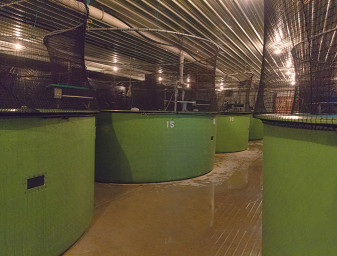
Tanks at AquaBounty’s hatchery in Prince Edward Island, Canada. Photo courtesy of AquaBounty.
- Neither hatcheries nor grow-out facilities will be located in the United States, at least not yet; any new facilities would need FDA approval. Only two — one in Canada (where the eggs are produced) and another in Panama, both owed by AquaBounty — are approved to produce the fish at this time. Both are land-based facilities that, according to the company, eliminate the possibility of escapes, a concern for environmental groups and wild fish conservationists. AquaBounty plans to sell the eggs to other producers, and may seek approval to produce the eggs in the United States. A company spokesman said it is too early to discuss commercialization plans. “We just received the milestone approval,” he said.
- The fish is eligible for Best Aquaculture Practices (BAP) certification, if the company so chooses. However, neither BAP nor Aquaculture Stewardship Council (ASC) standards allow for grow-out of genetically modified salmon in ocean cages where escapement is a possibility, limiting eligible sites to land-based facilities only, and only those approved by the FDA.
- While many consumers are shocked that the U.S. marketplace will not be required to label the fish as “genetically modified,” that ruling is consistent with the FDA’s position on foods from genetically engineered crops. Steve Hart, VP-education and outreach at the Global Aquaculture Alliance, previously worked for years in the soy industry. He said soy producers had supported voluntary labeling, but were against state-by-state labeling laws, due partly to the impact it would have on packaging economics.
- The earliest the fish could hit the U.S. market would be in two years, and then only in limited amounts. The Panama facility can produce approximately 100 tons annually, the spokesman said. But potential legal challenges to both the U.S. and Canadian governments could result in further delays. Earlier this week, lawyers for Living Oceans Society and the Ecology Action Centre argued in court that Canada’s government acted unlawfully when it approved AquaBounty application to manufacture GM salmon “without adequate public notice and without adequate assessment for its other uses.” U.S. groups like Food & Water Watch and The Center For Food Safety may pursue legal action individually or as a coalition.
- Investors certainly took notice of the news. AquaBounty share prices increased 155 percent on the London Stock Exchange in morning trading the day after the announcement, to GBP 37 (EUR 52.77; USD 55.82).
- How prevalent the fish becomes remains a question. In the end, the marketplace decides the fate or impact of any product for sale. “We’re pleased that the FDA has reviewed AquAdvantage Salmon extremely thoroughly and decided to go forward with approval based on sound science. Ultimately, the marketplace will dictate the acceptance of AquAdvantage Salmon,” said Global Aquaculture Alliance Executive Director Wally Stevens.
Editor’s Note: This story was updated to update the stock price increase on Friday, Nov. 20, and to reflect that Elliot Entiss was the founder of AquaBounty. Ron Stotish joined the company in 2006 and became CEO in 2008.
Author
-

James Wright
Editorial Manager
Global Aquaculture Alliance
Portsmouth, NH, USA
[103,114,111,46,101,99,110,97,105,108,108,97,97,103,64,116,104,103,105,114,119,46,115,101,109,97,106]
Tagged With
Related Posts
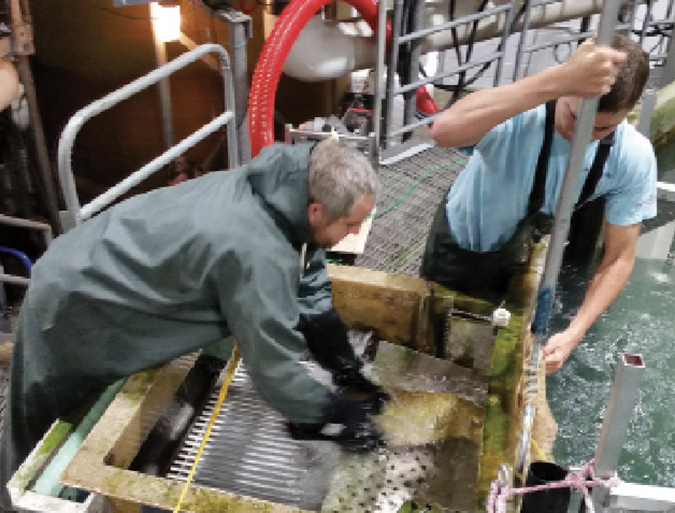
Health & Welfare
Novel air-based system transfers large salmon during harvest
To evaluate the application of an air pressure-based transport method within a recirculating aquaculture system, the authors performed testing with harvest-size salmon at The Conservation Fund Freshwater Institute.
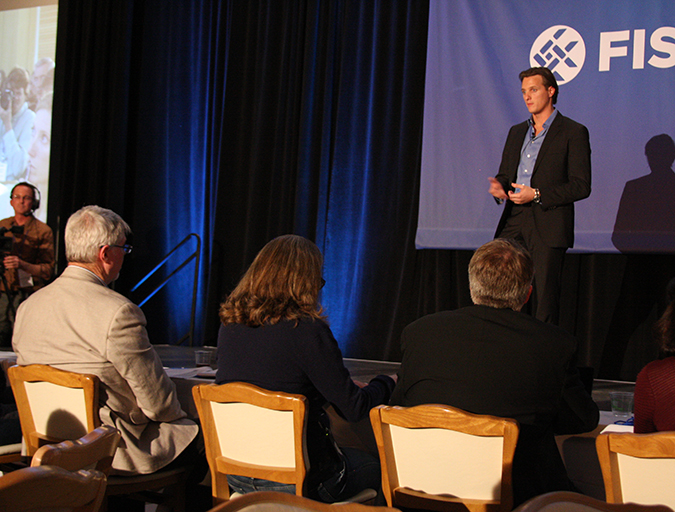
Innovation & Investment
Like fish in a barrel: Seafood innovators land investor interest
At Fish 2.0, it’s seafood, Silicon Valley style. Aquaculture companies gave their best pitches to investors and two left Palo Alto, Calif., as winners. Founder Monica Jain says the competition highlights a financial gap that must be bridged for the industry to advance.
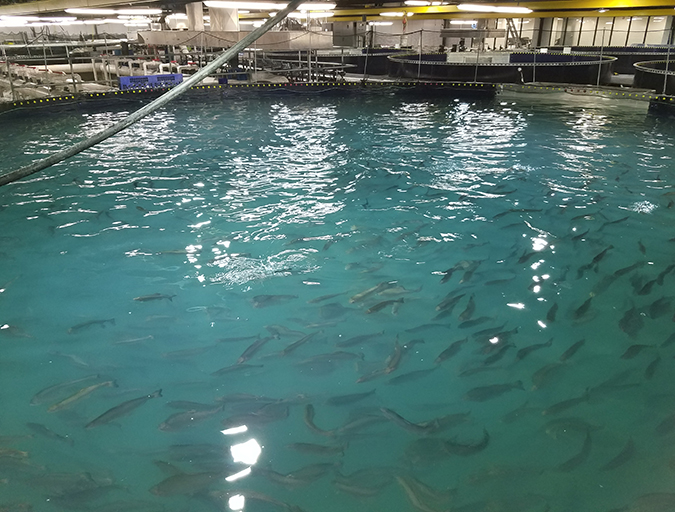
Intelligence
A land grab for salmon (and shrimp) in upstate New York
The operators of Hudson Valley Fish Farm see their inland locale as a pilot to prove that land-based fish farming, located in close proximity to major metropolitan markets, can be successful.
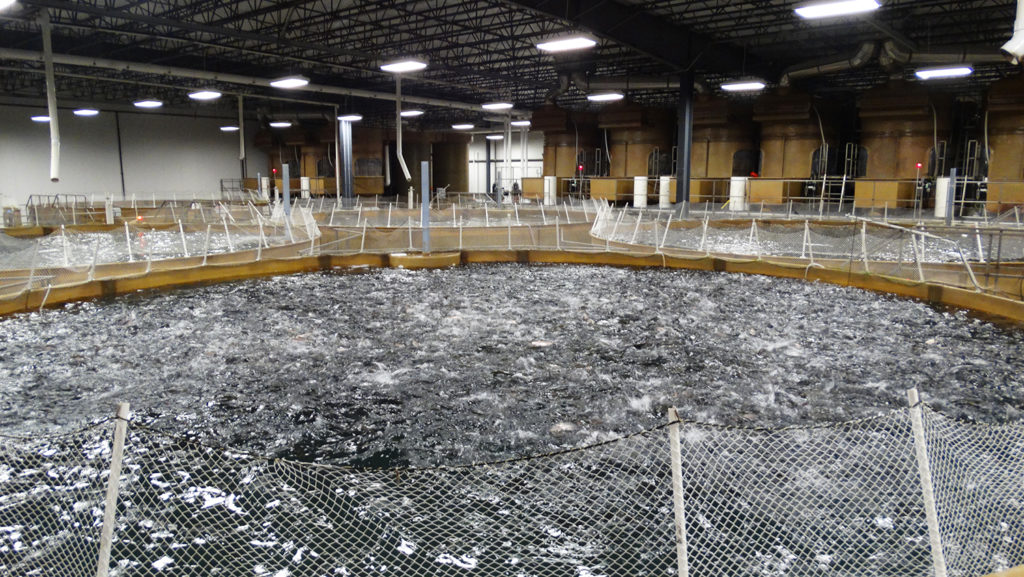
Innovation & Investment
AquaBounty, with new RAS facility, hopes to win public support for GM salmon
Ron Stotish, CEO of AquaBounty Technologies, believes genetically modified salmon is no threat to its opponents and the outlook for AquAdvantage is good. With its purchase of the Bell Fish Co. RAS facility, commercialization will soon commence.

